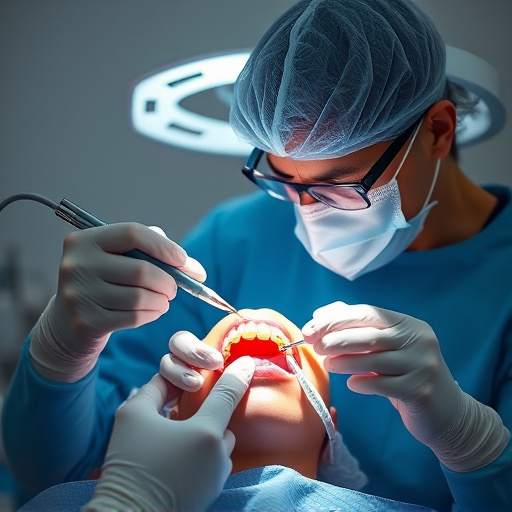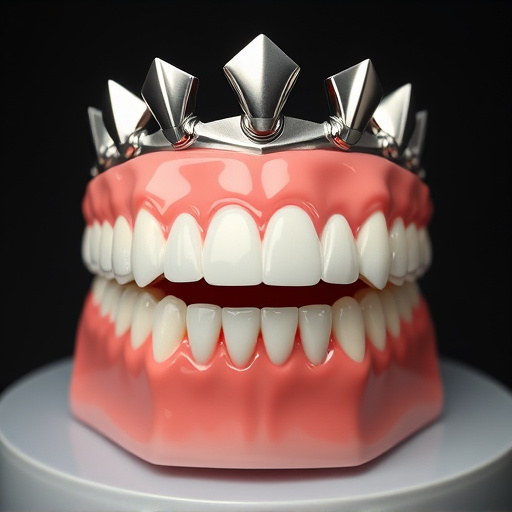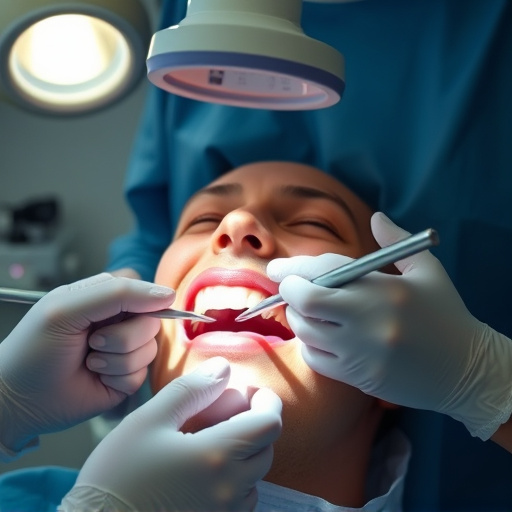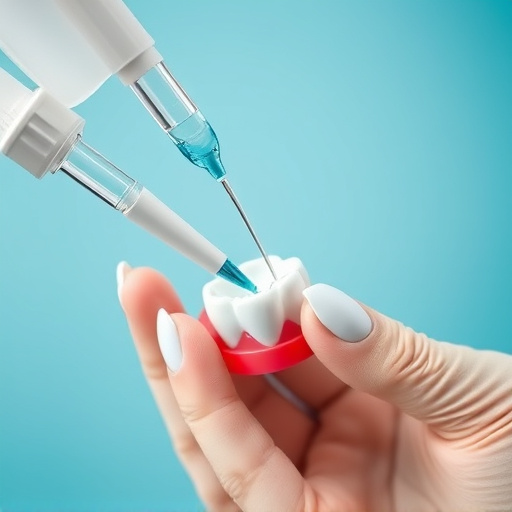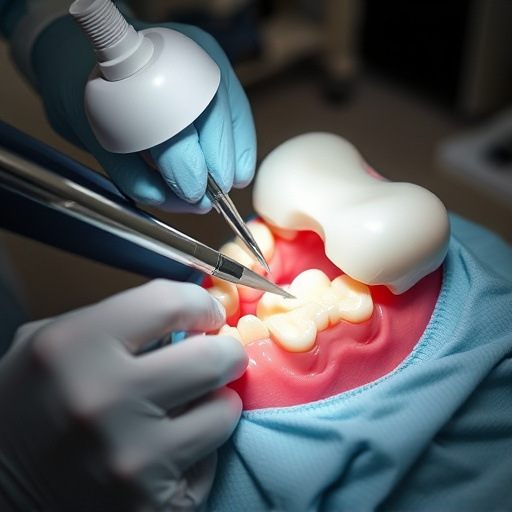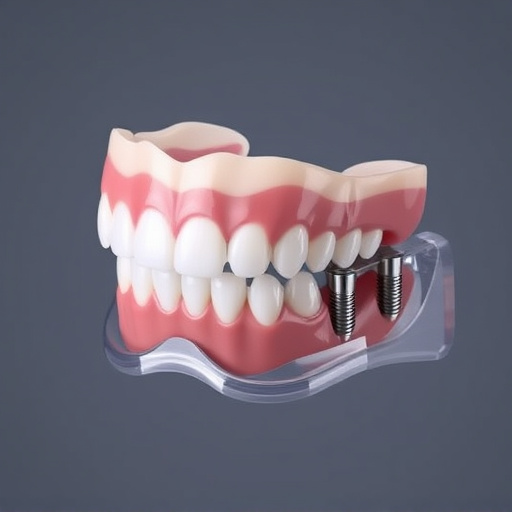Bone grafting treatment restores jawbone integrity after significant loss, crucial for subsequent dental implants or cosmetic procedures. Surgeons place bone-like materials to stimulate new growth, maintaining facial structure and oral health. Comprehensive assessment, careful procedure execution, and proper post-operative care ensure healing and long-term aesthetic success.
Bone grafting treatment is a revolutionary procedure transforming upper and lower jaw restoration. This advanced technique addresses common oral issues like bone loss due to tooth extractions or periodontal disease. Understanding bone grafting involves grasping how it regenerates jawbone, filling structural gaps, and enhancing overall oral health. The article delves into the process, benefits, and considerations crucial for successful healing, providing comprehensive insights into this transformative treatment.
- Understanding Bone Grafting for Jaw Restoration
- The Process: Steps and Techniques Employed
- Benefits and Considerations for Effective Healing
Understanding Bone Grafting for Jaw Restoration

Bone grafting is a surgical procedure that plays a pivotal role in restoring jaw bone structure and health when significant bone loss occurs due to conditions like tooth extractions, wisdom tooth removal, or periodontal disease. This treatment is particularly crucial for upper and lower jaw needs, ensuring proper healing and supporting subsequent dental procedures such as implants or bridges.
The process involves the careful placement of a bone-like material into the affected area to stimulate new bone growth. This graft material can be autologous (from the patient’s own body), allogenic (from a donor), or synthetic. By replacing lost bone, bone grafting treatment helps maintain facial contours, promotes stable gums, and provides a solid foundation for tooth repair and restoration, enhancing overall oral health and aesthetics.
The Process: Steps and Techniques Employed
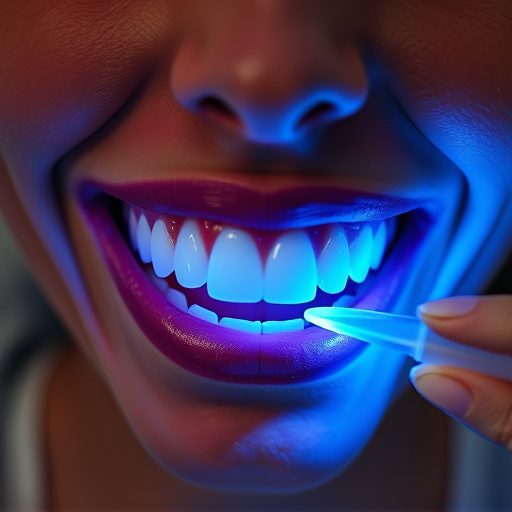
Bone grafting treatment involves a meticulous process designed to restore and rebuild bone structure in the upper and lower jaw areas. This advanced dental procedure is crucial for patients experiencing bone loss due to various factors, such as tooth extractions, periodontal disease, or traumatic injuries. The journey begins with a detailed assessment where dentists determine the extent of bone deterioration. Once approved, the grafting process starts by creating a small incision in the gum tissue to access the jawbone.
Next, a sterile bone graft material, often derived from animal sources or synthetic alternatives, is carefully placed into the designated area. This material acts as a scaffold, encouraging new bone growth and regeneration. To ensure optimal healing, the site is then meticulously closed with sutures. Post-operative care includes recommendations for rest and a specific diet to facilitate the fusion of the grafted bone. Regular dental cleanings and follow-up visits are vital to monitor the healing process, ensuring successful long-term results in general dentistry and potentially enhancing cosmetic dentistry outcomes.
Benefits and Considerations for Effective Healing
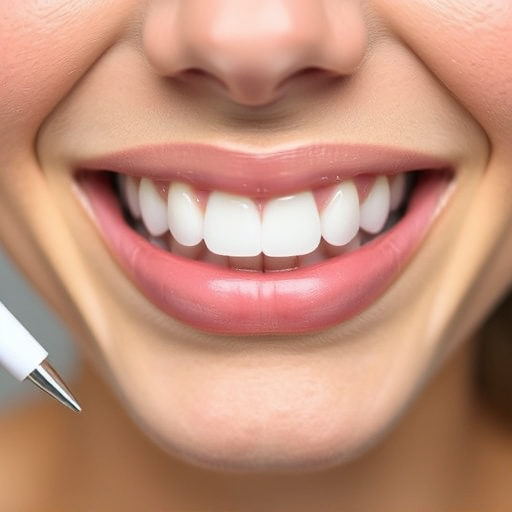
Bone grafting treatment offers significant benefits for those needing upper or lower jaw reconstruction. One of its key advantages is enhancing osseointegration—the bonding between bone and dental implants, ensuring stable support for future teeth replacements like dental implants or cosmetic fillings. This process also helps prevent bone resorption, a common issue after tooth loss, which maintains the natural facial structure and overall oral health.
When considering bone grafting, effective healing is paramount. Proper post-procedure care, including meticulous teeth cleaning and adhering to the dentist’s instructions, plays a crucial role in promoting successful integration. Additionally, patients should be aware that healing times vary depending on the procedure’s complexity and individual factors; patience and adherence to aftercare guidelines are essential for optimal results.
Bone grafting treatment offers a promising solution for restoring jaw health and functionality. By understanding the process, from its key techniques to post-procedure care, patients can make informed decisions about this effective method. Bone grafting not only enhances facial aesthetics but also ensures robust support for dental implants, improving overall oral health and quality of life. This advanced treatment is a game-changer in addressing upper and lower jaw needs, providing a durable and natural-feeling restoration.




